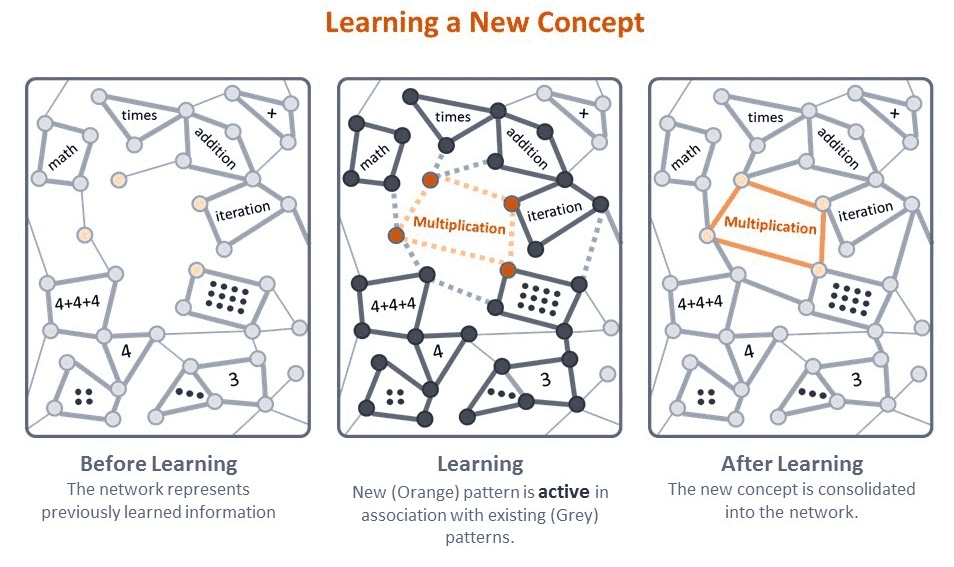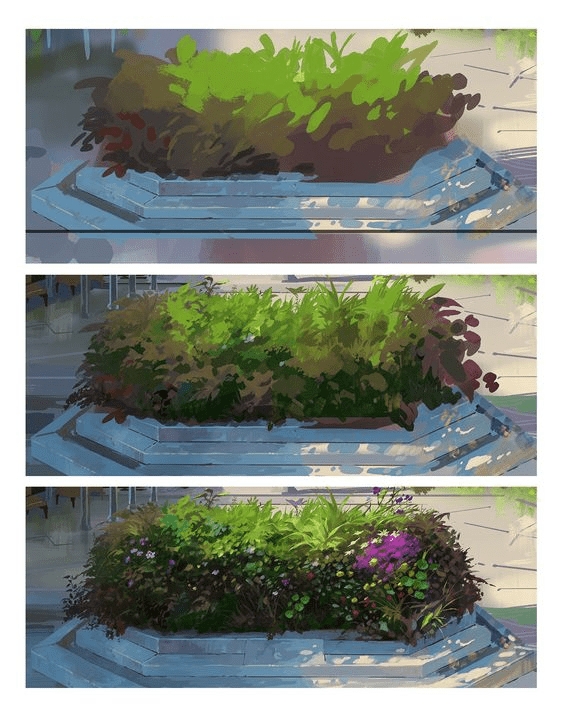📖How to Take Reading Notes
Think about a question: why do we take reading notes?
We have mentioned before that besides writing, making a decision is also a kind of outputting information. So when we are taking reading notes, adding new knowledge blocks and connections should be our top priority. Writing a reading review with thousands of likes, complicated mindmaps, or fancy visual notes should not be the goal we pursue.
Taking notes is for better thinking rather than showing off.
#Taking notes for better thinking

via Understanding 'Understanding'(opens new window)
We always say that there is knowledge in books. This is not true. For example, Probabilities and Statistics for Engineers only means information to me. Even though there are lots of quotes, I could hardly understand most of them, which means, I could not transform this information into the knowledge helping me to make decisions. Therefore, from this perspective, we should not focus on the quantity of books we read and notes we took, but on:
What knowledge I have grasped from this book, and what knowledge has connected with my existing knowledge.
I didn’t like using incentives in product design, so it is hard to find any “check-in for rewards” incentives. But this is out of my personal interests. However, while reading Why We Do What We Do: Understanding Self-motivation, the part about rewards shifts my attitude from a rational perspective. It also provides a few solutions on how to give rewards such as “deep linking”, which encourages me to devote myself to building flomo college and our communities.

Linking with our users may not all happen in the product. It can be displayed through the mindset.
#The mistakes of taking notes
Before we understand the meaning of taking reading notes, we have taken reading notes for years. Such a habit is formed without any consciousness. But when you review it from another perspective, you may find most of your note-taking efforts are in vain.

Take lots of quotes and excerpts without your own thoughts. For many of us, reading notes somehow equals a collection of quotes. And the product design encouraging to quote on many reading apps makes it almost frictionless.
Pursue all kinds of structures rather than the core of notes. Many reading notes are just mindmaps with fancy structures. It seems that they are technical. But most of them are just the replicas of contents of books. Their so-called structures remain the same as the books they read. There is nothing of their own in these notes.
Only categorize the notes with the names of books. The names of books are useless categories. They can only represent that you have read these books. However, the knowledge blocks in books may belong to different areas. So using the book names to categorize notes can hardly allow us to connect the knowledge blocks.
Keep taking notes without any review. Some people may be obsessed with the quantity of notes and books. They expect to maximize their inputs in a limited time. But in the end, it is the knowledge we could remember that produces values. If we only input information without any review, then it seems that we are saving water from a bucket with a hole. Nothing can be left at all.
Honestly, I don’t want to criticize anyone because I have been there. It is a kindly alert to us to ponder what the meaning of reading notes is.
#How to take reading notes with flomo
Say if we are going to draw a picture, instead of getting into the details, we will start from the whole structure first.

It is the same to read a book. When we are going to read a book, we should skip reading it without any notes, and then mark the areas where we don’t fully understand. This is a step in building the structure of the book. Don’t worry about missing out on anything. After finishing the book, if there is one knowledge point being remembered, it is worthwhile.
#Use your own words to write cards
As mentioned in How to Take Smart Notes, while taking notes, avoid quoting from the books directly. Use your own words to write cards. Don’t worry about your expressions or words. Writing cards is a mirror of your understanding. Be honest with it.
If you are not reading for academic results, you don’t have to distinguish the difference between fleeting notes and permanent notes. I mean, the process is not that important. Make sure you know the goal and then combine the process with your own habits.
The following card is my notes while reading Hypertext and Hyperlinks. The information is actually spread in several chapters. While according to my understanding, I believe they could be formed in this way. And because I have just finished the documentary The Pilgrimage of Hsuan Tsang, so I connected the history of Buddhism with the one of the World Wide Web. This is the benefit of writing cards for yourself. The connection is engraved in your brain, which is the true goal.

Please note that the content on each card should be as simple as possible. Avoid the complicated formatting or hierarchy, so you can review them faster and connect the cards more easily. The smallest unit in our brain is a knowledge chunk, not a knowledge wall.
#Build the connections with tags and annotations
There are two features in flomo’s tag system. One is that you can add multiple tags to one MEMO. The other is that you can use a hierarchy of tags.
Normally, there are at least two tags in my reading notes:
One tag is marked as resources #Books/BookName. It is for easily searching the book in the future.
Another tag is marked as areas #Area/AreaName/SubAreaName. It is used to connect the knowledge chunks.
But I don’t spare to tag my MEMOs. As I have mentioned in previous articles, the knowledge in our brain is connected to build a web. We don’t have to be MECE (mutually exclusive and collectively exhaustive). We won’t organize our necessities in the way of library classification.
Compared with tags, the annotation is more suitable to build the connections between two MEMOs. While taking notes, if you find a connection with another note or recall some specific tags, you can use annotation to build links between these two notes. Therefore, you can keep MEMOs simple (like I said, one MEMO, one knowledge chunk) but connected.
Why do I emphasize connecting with your existing notes? Because this is a way to distinguish memorizing and understanding.
Memorizing means the ability to recite something. You can recite a poem without fully understanding it by repeating it several times.
Understanding means the ability to explain an idea or to use it. You can use a poem to describe a suitable situation and explain the metaphors in it.
If we only write down knowledge chunks according to the classification in books, then notes will scatter on flomo. However, connecting your notes means that you build a thread of knowledge, which can help you to build a larger web.

via Learning in the brain(opens new window)
I have explained the concept of Area in this article, so I leave out it here.
#Choose different way to review notes
Have you ever read books but remembered nothing? Have you remembered part of the books but always forgotten? We have seen many similar questions before, and these are why people always saying “reading is useless”. But we are not computers. We can’t remember everything which is plugged into us. So it is important to review notes. It is a way to enhance your memory, and a path to find your growth in knowledge.
There are two types of reviewing on flomo. One is randomly reviewing based on the widgets. Another is regularly reviewing based on WeChat. These two reviewing methods are designed for two different scenarios while reading non-fiction.
When you are reading textbooks with simple structure but lots of knowledge chunks, it is important to review notes frequently. But it is not that important to remember in a sequence.
When you are reading books like sociology which requires you to understand it, it is more important to ponder it as a routine.
So as for the first scenario, I personally recommend you to use widgets. Each time you pick up the phone, you can enhance your memory.

As for the second scenario, it is more suitable to use WeChat for reviewing. You can set an alarm to remind you of reviewing these notes. And if possible, you can use annotation to link your current thoughts with previous notes.

#Conclusion
What shapes us is not the quantity of books we read, but the understanding we left.
We read books to grasp knowledge. But knowledge is more than remembering. We need to understand what we read as well. Knowledge and understanding are two different parts of the same thing. Knowledge is the collection of the concepts in our brain, while understanding is the connection among these concepts. Knowledge and understanding are mutually reliable.
So when we are taking reading notes, don’t worry about the formatting, outputting, or missing out on anything.
Because taking notes is for better thinking.
Last updated